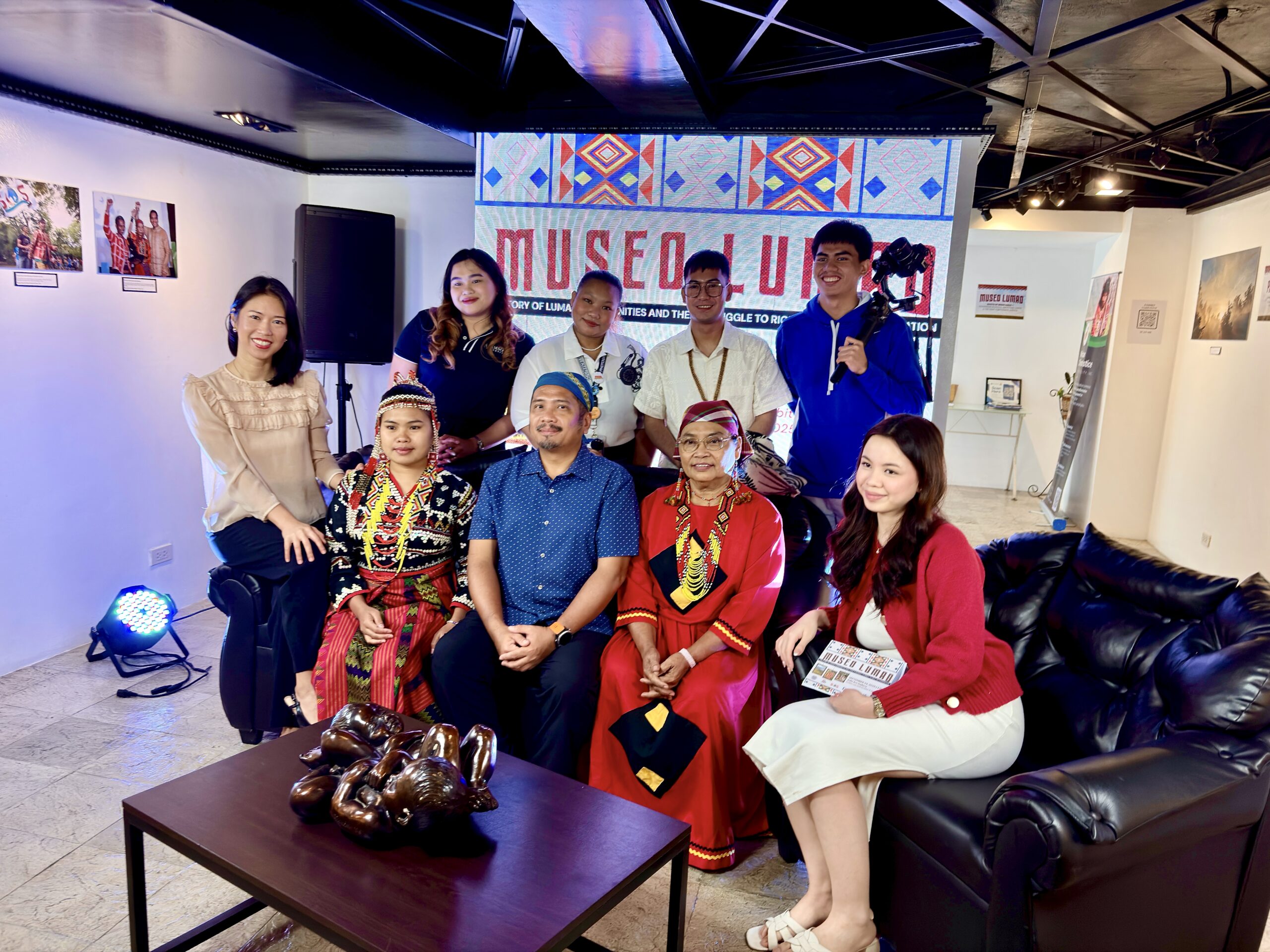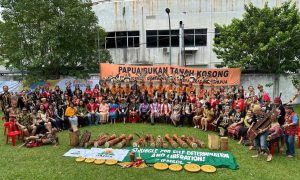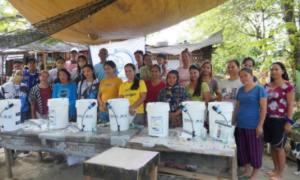A tribute to the Lumad’s enduring fight for land, life, and self-determination — and a reminder that justice for the Earth is inseparable from justice for its caretakers.
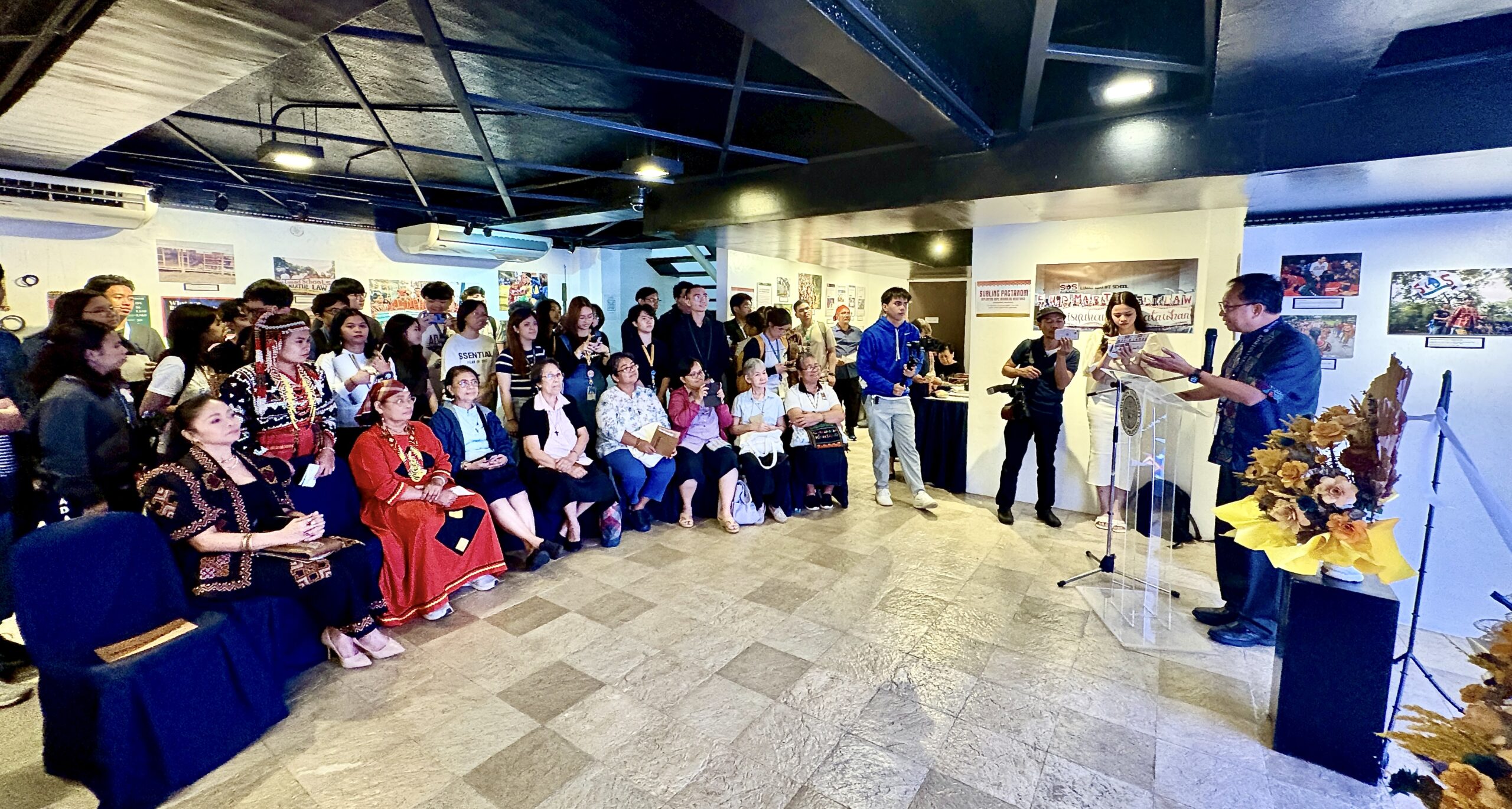
From September 24 to October 11, 2025, Adamson University opened its halls to Museo Lumad: The Story of Lumad Communities and Their Struggle for the Right to Self-Determination.
The exhibit, organized by the Adamson University Cultural Affairs Office (CAO) in partnership with the Save Our Schools (SOS) Network – Mindanao, the Educators’ Forum for Development (EFD) – Mindanao, the Missionary Benedictine Sisters of Tutzing (OSB) – Socio-Pastoral Apostolate (SPA), and Mindanao Climate Justice (MCJ), brought together communities, educators, and advocates in a shared act of remembrance and solidarity.
Inside the Adamson Art Gallery, visitors encountered artifacts, musical instruments, photographs, and crafts shared by Lumad communities and partner organizations, each carrying its own story of courage and continuity.
Among the exhibit’s key sections was Museo Lumad: Roots of Resistance — Indigenous Peoples’ Schools, Ancestral Lands, and the Fight for Climate Justice, curated by MCJ through its Lumad School Memory Project. This segment featured photographs, testimonies, and research narratives documenting decades of Indigenous-led education, displacement, and resilience in Mindanao.
Together, these collective efforts transformed the gallery into a living memorial of struggle and survival — a space where art, faith, and advocacy converged to remind audiences that the struggle for Indigenous rights is also the struggle for our shared future.
Museo Lumad reached beyond the university walls when it was featured by GMA News Lifestyle in its story, “The Story of Lumad Communities Featured in Adamson Exhibit,” reflecting growing national attention to Lumad education and the fight for climate justice.
Opening Program: Voices of Solidarity and Memory
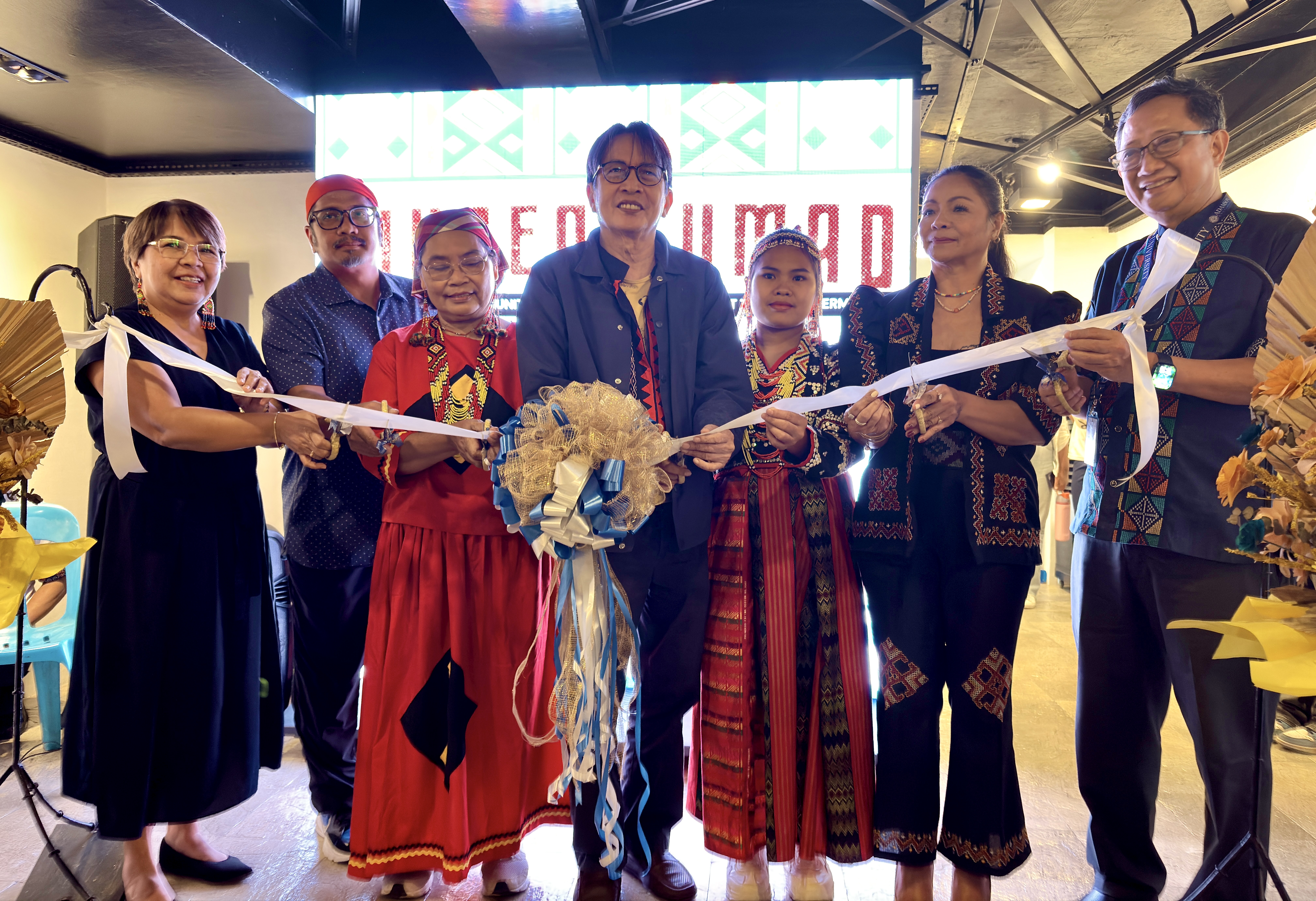
The opening program on September 24 brought together voices from faith, academe, and grassroots movements, each affirming that defending Lumad schools is inseparable from defending land, culture, and life.
Fr. Daniel Franklin Pilario, CM, President of Adamson University, linked the exhibit to the university’s Vincentian mission:
“In the spirit of St. Vincent de Paul, this gallery is more than art—it is an act of solidarity with Indigenous youth seeking education rooted in dignity, culture, and life.”
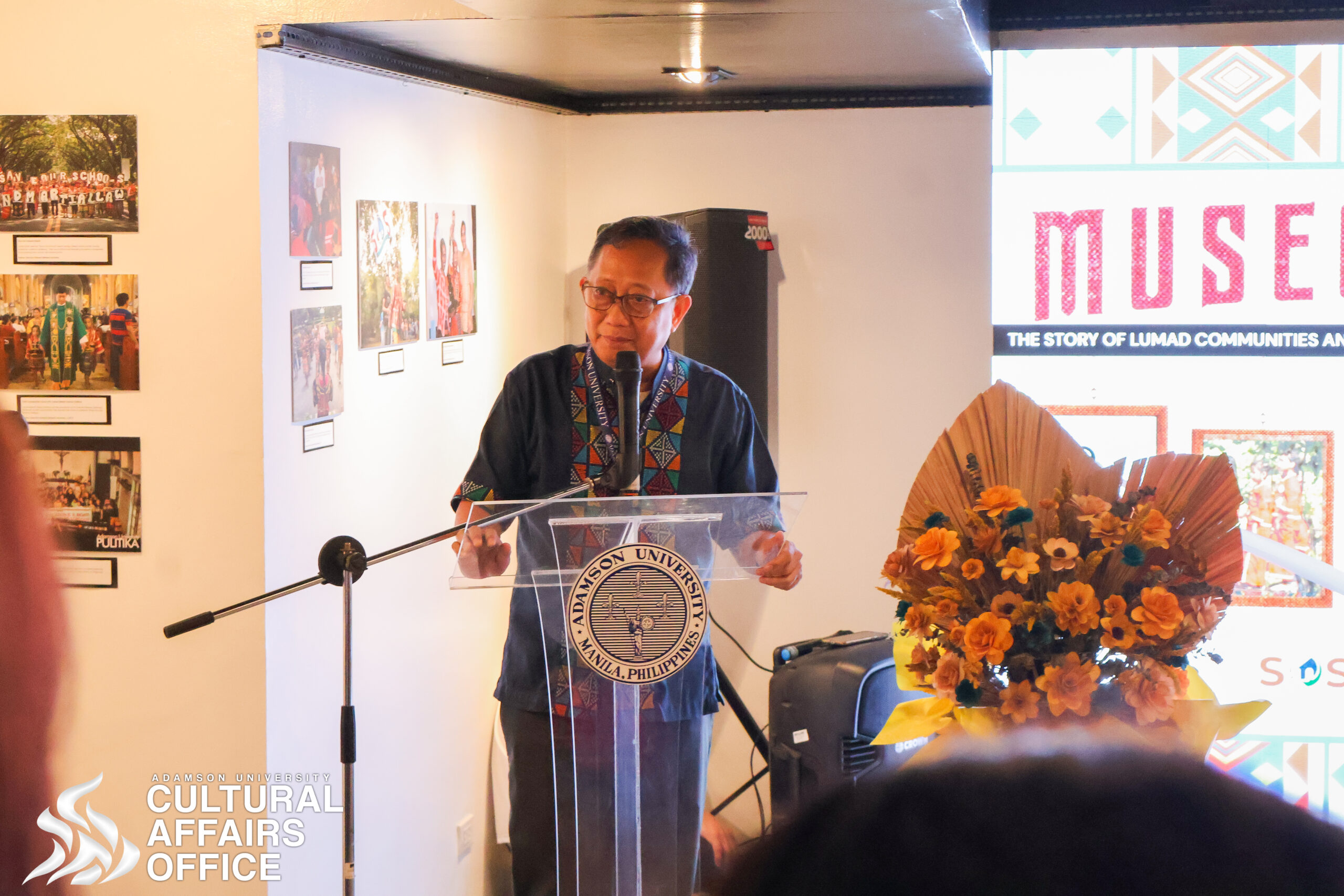
Fr. Pilario’s message was followed by that of Femia Cullamat, Lumad leader and SOS Network–Mindanao convenor:
“Museo Lumad is not an aquarium where we are looked at like fish, nor a display of relics. This is our living history—our struggle, our martyrs, our spirituality, and our dream to keep our schools and culture alive.”
Her words grounded the gathering in truth: the exhibit was not just remembrance, but a continuation of struggle.
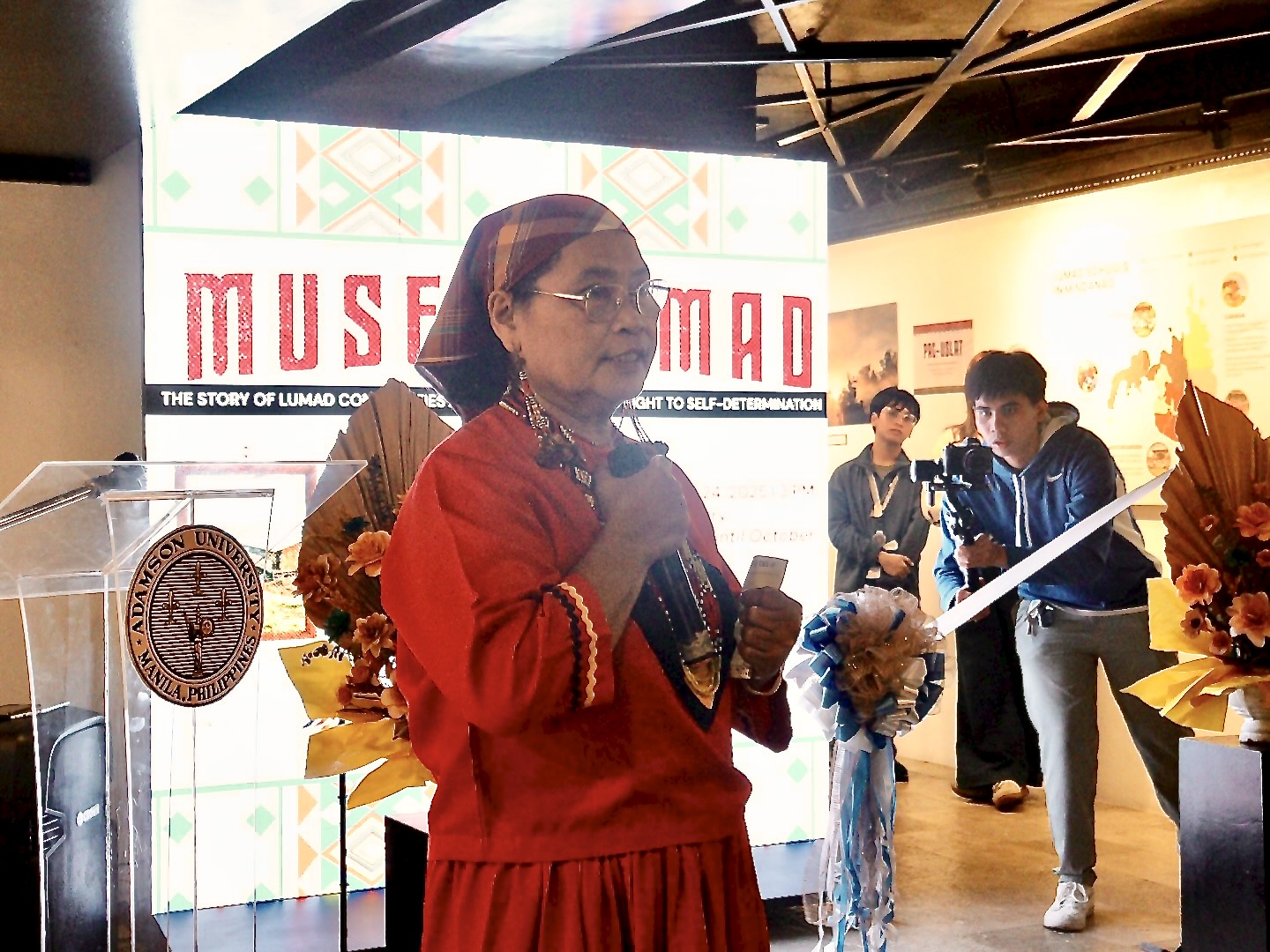
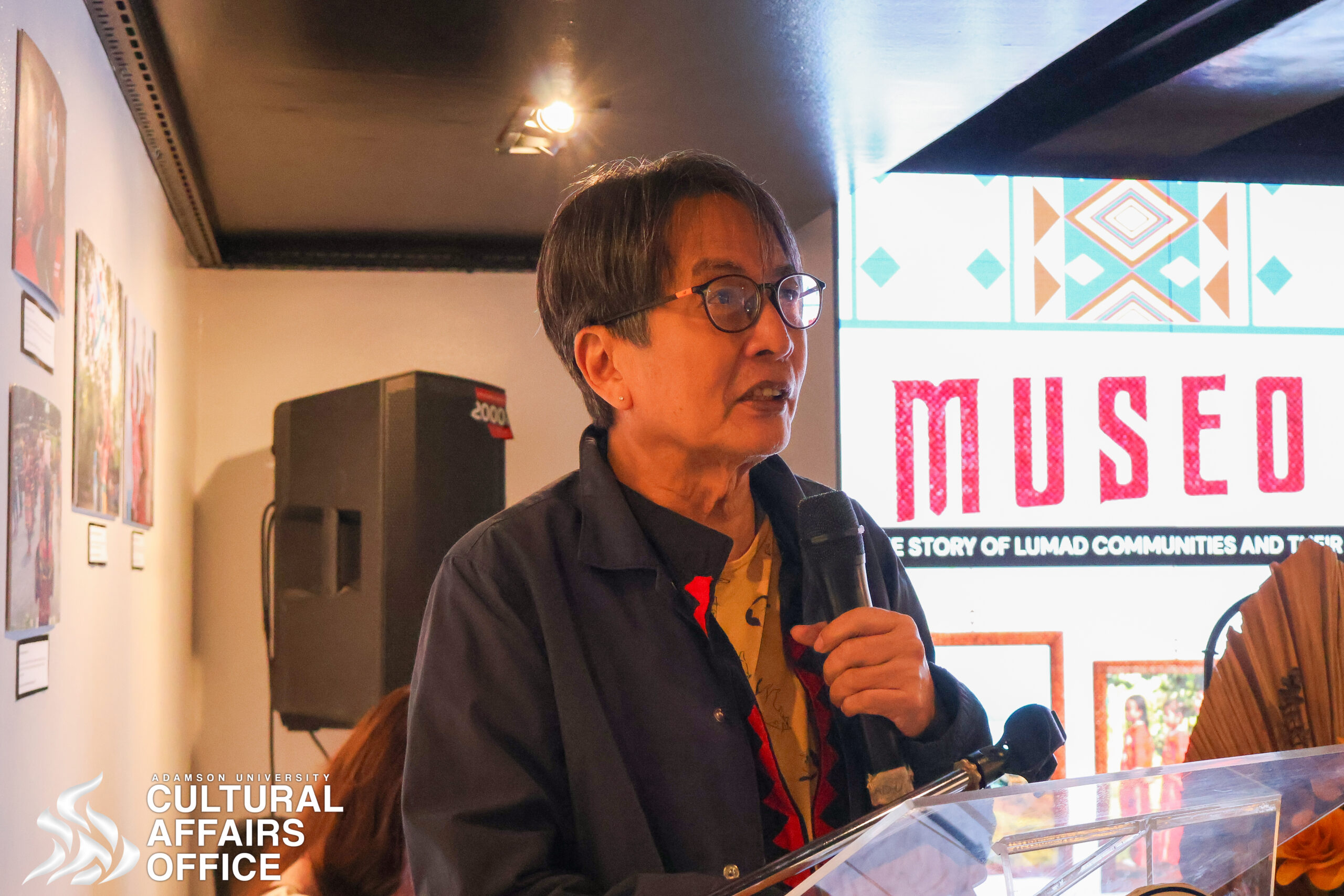
Music and Movement: Songs of Memory and Reclamation
As the program unfolded, music and movement deepened the atmosphere of remembrance and solidarity.
Bayang Barrios, a Manobo artist from Agusan del Sur, shared how she once hid her Lumad identity in childhood because of discrimination—and how she now performs proudly to reclaim and celebrate it. Her message resonated with students and faculty alike: art can be both healing and resistance.
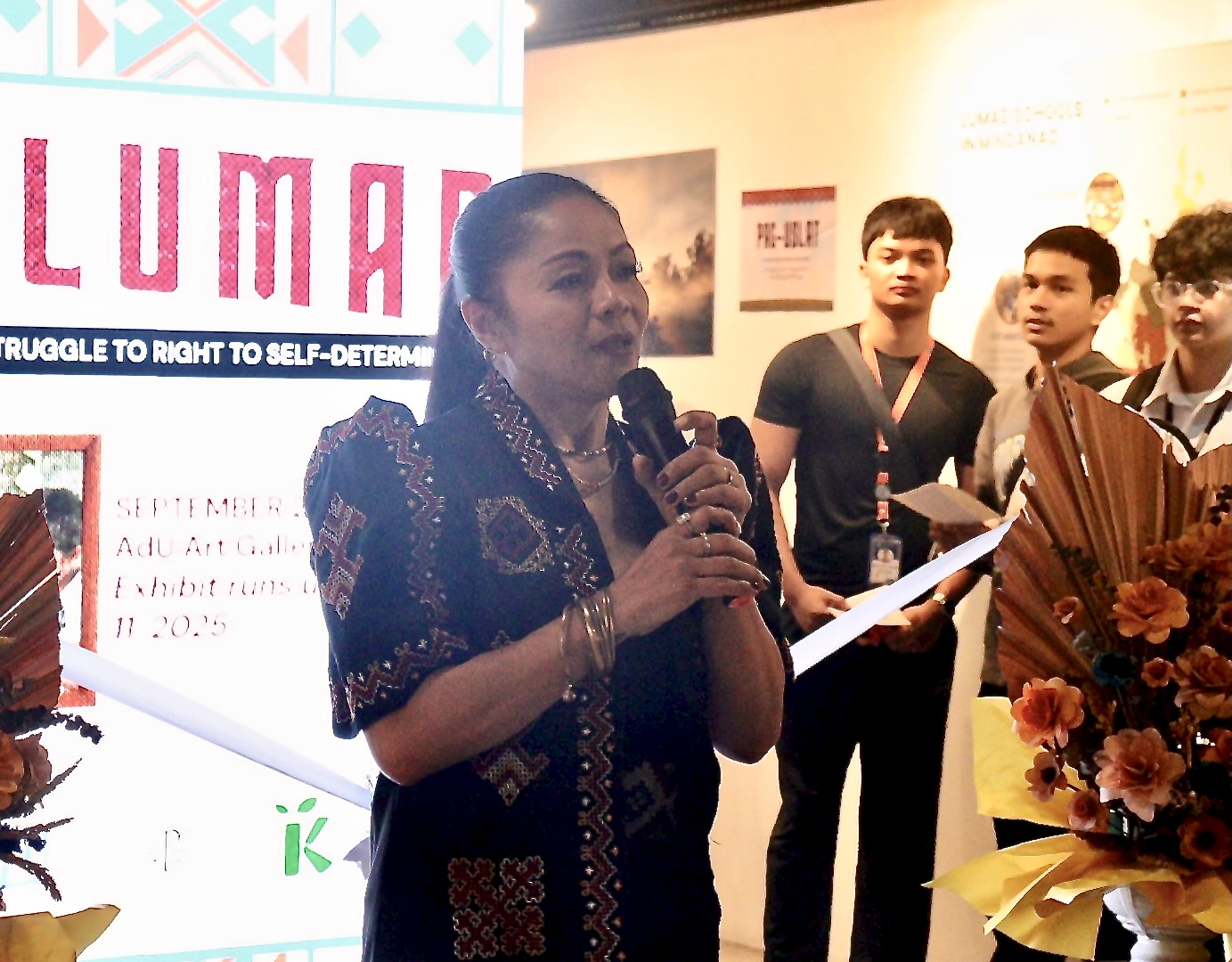
Her voice filled the gallery with songs of grief, defiance, and hope—an echo of the Lumad people’s enduring struggle to protect land and life.
Opening the program earlier, the Adamson University Folk Dance Troupe performed Kastifun, a traditional Blaan song of welcome that filled the hall with rhythm and color, inviting everyone into the spirit of Lumad resilience and pride.
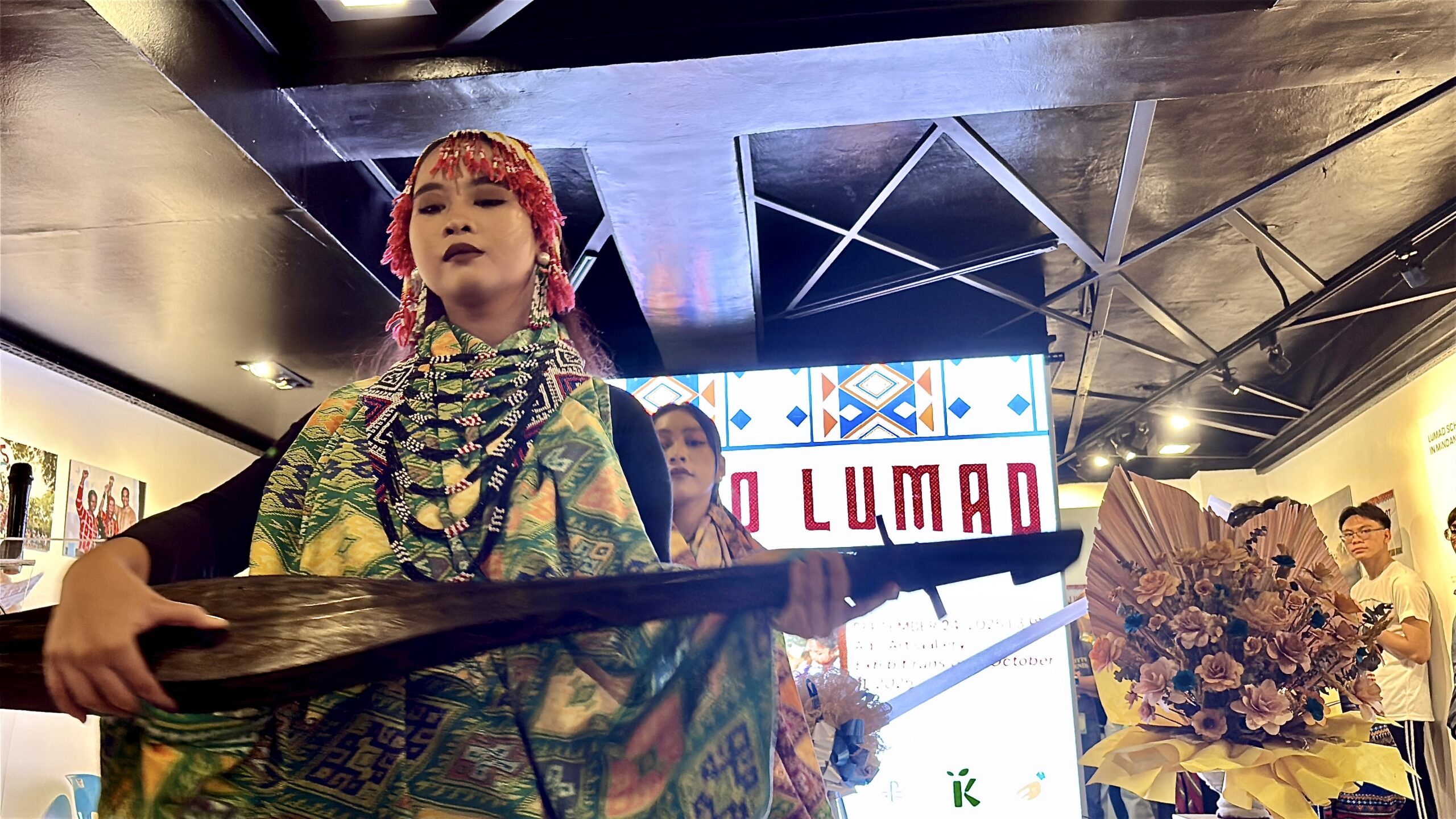
The performances reminded the audience that culture is not ornamental—it is alive, political, and deeply tied to the struggle for justice.
Stories from the Land
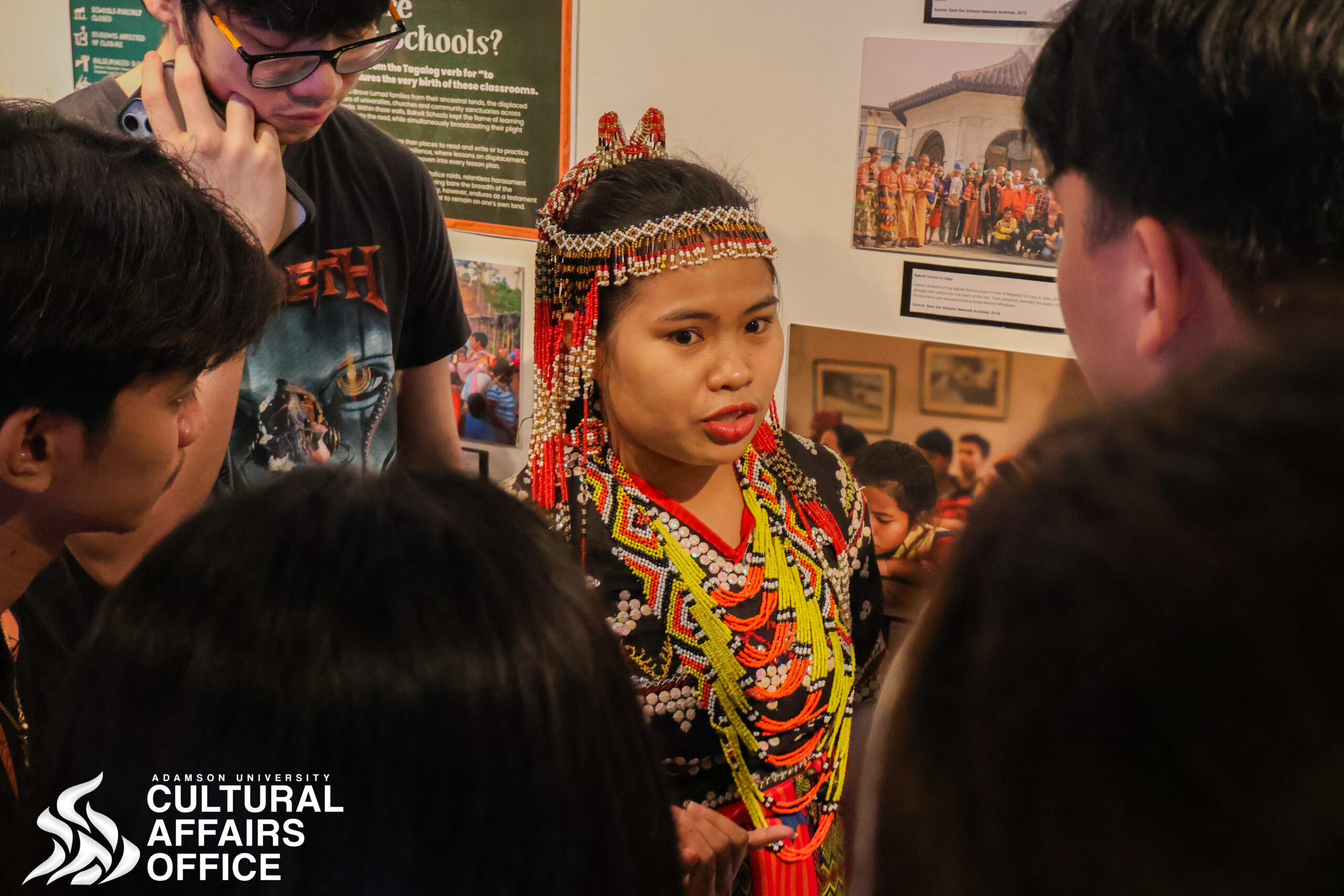
Each image in Museo Lumad carried the weight of memory—portraits of elders guarding ancestral soil, women standing firm against militarization, and children learning in schools they helped build. Beyond hardship shone dignity and strength: an unbroken bond with the land that sustains both life and culture. The exhibit revealed what Lumad communities have long known: that self-determination and ecological defense are one and the same.
In an era of intensifying climate crisis, Museo Lumad offered a vital truth: justice for the Earth is bound to justice for its caretakers. It urged viewers to look beyond statistics and policies—to see the human faces behind the struggle for land and life. The Lumad are not merely “stakeholders” in environmental debates; they are defenders, teachers, and stewards of the Earth, carrying knowledge and courage the world urgently needs.
Threads of connection
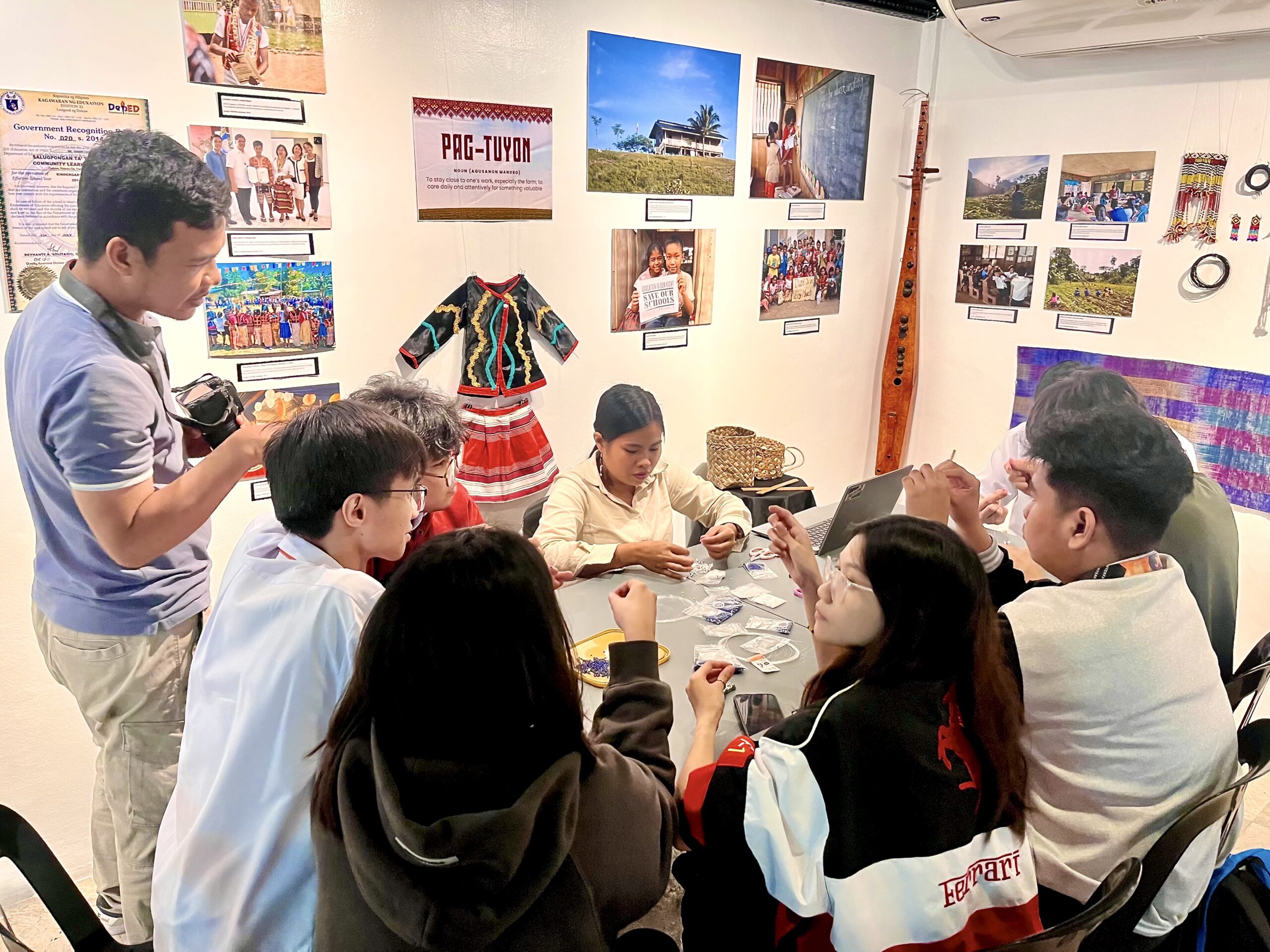
Throughout the exhibit’s run, students, faculty, and staff engaged deeply with the stories on display. The gallery became not just a display, but a classroom for empathy and solidarity.
Guided by Lumad women, students learned traditional bead patterns symbolizing rivers, mountains, and kinship — transforming craft into conversation and cultural exchange.
Closing and Continuing
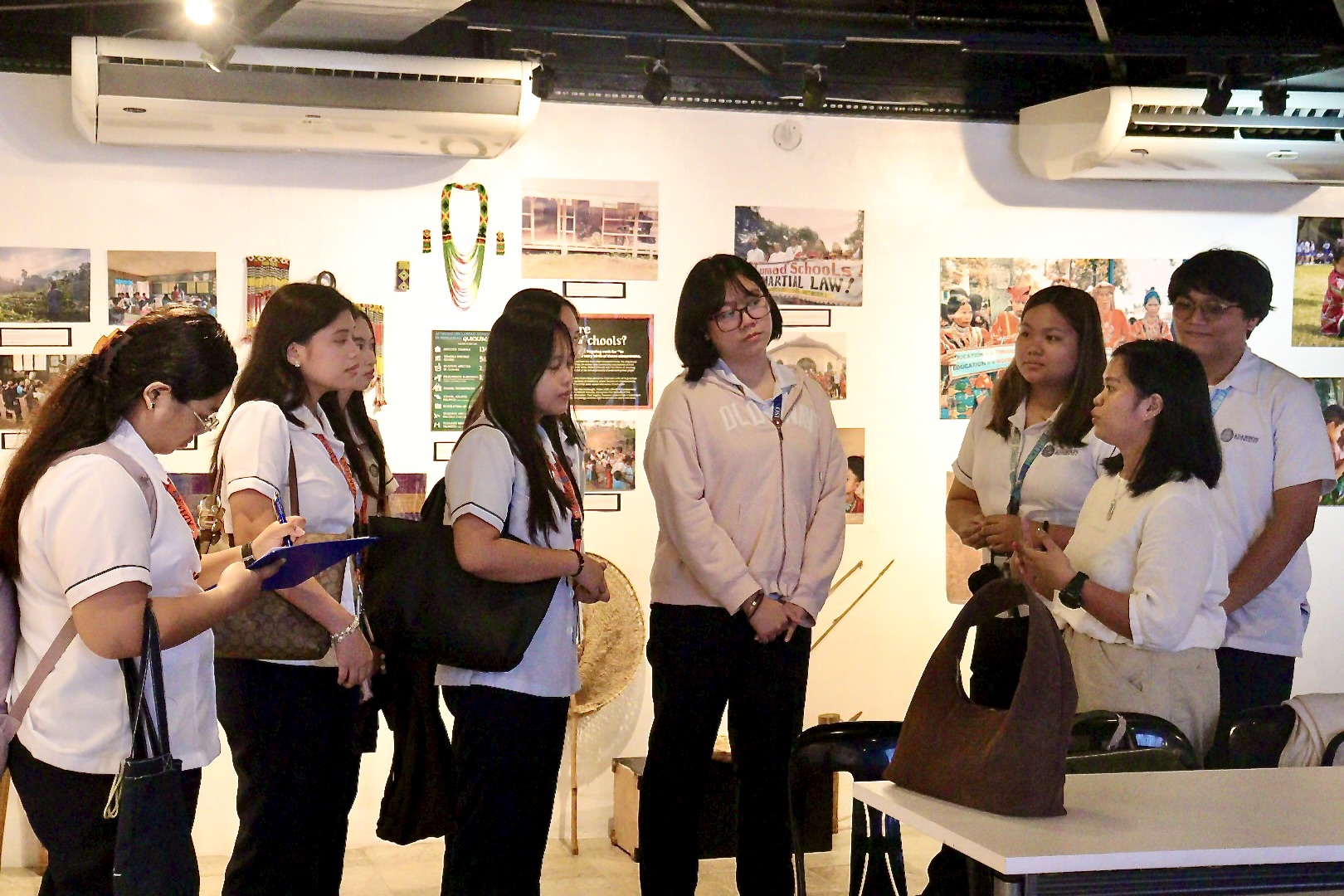
The event closed with gratitude to the students, faculty, and guests who filled the gallery with reflection and dialogue throughout the exhibit’s run.
The Adamson University Cultural Affairs Office expressed that Museo Lumad had deepened the university’s sense of responsibility to the stories it hosted—affirming a continuing commitment to stand with Lumad communities until their schools are reopened and they can return peacefully to their ancestral lands.
The Work Continues
Though the exhibit at Adamson University has closed, its message continues to travel.
Museo Lumad will journey next to other universities, parishes, and institutions as part of the Lumad School Memory Project — a continuing effort by Mindanao Climate Justice (MCJ) to document and share the stories of Indigenous education, displacement, and resilience in Mindanao.
MCJ invites schools, faith communities, and organizations to partner in hosting the mobile exhibit and to stand in solidarity with Lumad communities defending their right to education, land, and life.
For MCJ, climate justice is not only about reducing emissions — it is about honoring those who have long protected our forests and rivers, long before “sustainability” became a slogan.
Museo Lumad is more than an exhibit; it is a living journey, a call to conscience, and an open invitation to solidarity.
Its stories will continue to live, be retold, and inspire the collective struggle for land, life, and justice.
